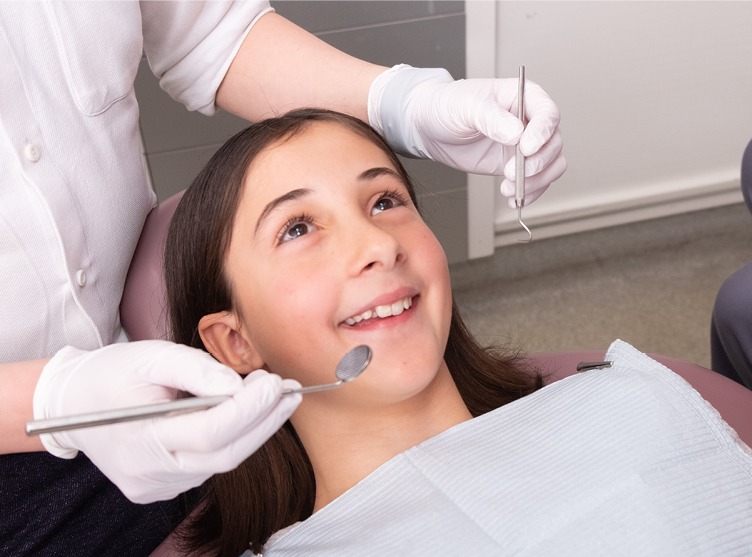An Unbiased View of Legacy Orthodontics
An Unbiased View of Legacy Orthodontics
Blog Article
The 5-Minute Rule for Legacy Orthodontics
Table of Contents3 Simple Techniques For Legacy OrthodonticsThe Best Guide To Legacy OrthodonticsSome Known Questions About Legacy Orthodontics.The 10-Minute Rule for Legacy OrthodonticsThe Best Strategy To Use For Legacy Orthodontics
In addition, we offer adjustable treatment routines, versatile settlement options and a fun, delightful experience.An orthodontist is a dental expert trained to detect, stop, and treat teeth and jaw irregularities. They fix existing conditions and are trained to identify problems that may develop in the future. Orthodontists work with individuals of every ages, from children to adults. People commonly associate a perfect smile with health.
Malocclusion, or misaligned teeth, can result in dental concerns, consisting of tooth decay, gum condition, and challenging or painful eating. Not everyone is born with straight teeth. If you have a negative bite or huge areas between your teeth, you may wish to speak with a dentist concentrating on orthodontic care.
Legacy Orthodontics Can Be Fun For Everyone
( Photo Credit: DigitalVision/Getty Images) Orthodontists utilize taken care of and removable dental devices, like dental braces, retainers, and bands, to alter the placement of teeth in your mouth. Orthodontic therapy is for oral problems, consisting of: Misaligned teethBite troubles, like an overbite or an underbiteCrowded teeth or teeth that are also far apartJaw misalignmentThe goal of orthodontic therapy is to enhance your bite.
A healthy bite ensures you can consume, eat, and talk correctly. While you could think about orthodontists as primarily for children or teenagers who need dental braces, they can remedy dental issues at any age. Orthodontists go to university, dental institution, and orthodontic college. After graduation, they invest 2 or 3 years in an orthodontic residency program.
, yet not all dentists are orthodontists. They concentrate on two locations: Exactly how to properly and securely move teeth How to appropriately lead growth in the teeth, jaw, and faceOnce an orthodontist has completed training, they have the option to end up being board certified.
What Does Legacy Orthodontics Mean?
Misalignment, or malocclusion, is the most common factor individuals see an orthodontist. It is genetic and is the outcome of size differences in between the top and reduced jaw or between the jaw and teeth. Malocclusion brings about tooth overcrowding, a misshapen jaw, or irregular bite patterns. Malocclusion is normally treated with: Your orthodontist connects metal, ceramic, or plastic square bonds to your teeth.
If you have just minor malocclusion, you might be able to make use of clear braces, called aligners, as opposed to traditional dental braces (https://www.kickstarter.com/profile/legacyortho/about). Some people require a headwear to help relocate teeth into line with pressure from outside the mouth. After braces or aligners, you'll need to wear a retainer. A retainer is a custom-made gadget that keeps your teeth in place.
They're most usually utilized on kids. They can develop added area in the mouth without having to draw teeth. If you have a serious underbite or overbite, you could need orthognathic surgery (additionally called orthodontic surgical procedure) to lengthen or reduce your jaw. Orthodontists use wires, medical screws, or plates to sustain your jaw bone.
You might need to see an orthodontist if you have: Crowding or otherwise sufficient space for every one of your teethOverbite, when your top teeth come by your base teethUnderbite, these details when your bottom teeth are also far forwardSpacing or problems with gapsCrossbite, which is when your upper teeth fit behind your bottom teeth when your mouth is closedOpen bite or an upright space between your front base and top teethMisplaced midline, when the facility of your bottom and top teeth don't align Correcting an oral malocclusion can: Make attacking, eating, and speaking easierImprove the proportion of our face and your total appearanceEase discomfort from temporomandibular joint disordersSeparate your teeth and make them much easier to cleanse, assisting prevent dental cavity or dental caries It's usually a dentist who first notifications misaligned teeth throughout a regular test.
Not known Details About Legacy Orthodontics

Throughout your first orthodontic assessment, you'll likely have: A dental examPhotos taken of your face and smileDental X-raysPanoramic (360 degree) X-rays of your face and headImpressions to develop molds of your teethThese examinations will certainly help your orthodontist know how to proceed with your therapy. orthodontist. An orthodontist is a dental practitioner who's had training to treat your teeth and jaw
An orthodontist is focused on your bite, so something like a chipped tooth would certainly be managed by a dental practitioner. Orthodontists are concentrated on your bite, or the method your teeth fit together, and the straightness of your teeth.
Ever asked yourself how celebrities always appear to have completely aligned teeth? The answer frequently depends on the competent hands of an orthodontist. What exactly does an orthodontist do? Orthodontists are oral specialists that concentrate on fixing irregularities in the teeth and jaws. Their know-how goes past just developing a beautiful smile; it expands to improving your total dental wellness and function.
Things about Legacy Orthodontics

, orthodontists have a diverse toolkit at their disposal. These tried-and-true dental braces use a system of brackets bound to the teeth and connected by cables.
Clear aligners, like Invisalign, are a preferred option for patients looking for an extra discreet therapy alternative. These detachable trays are customized to progressively shift the teeth's position. Headwear might be used along with braces or aligners to use additional targeted pressures, especially for dealing with jaw disparities. In instances of slim jaws, palatal expanders can be used to develop room for proper tooth alignment.
Report this page